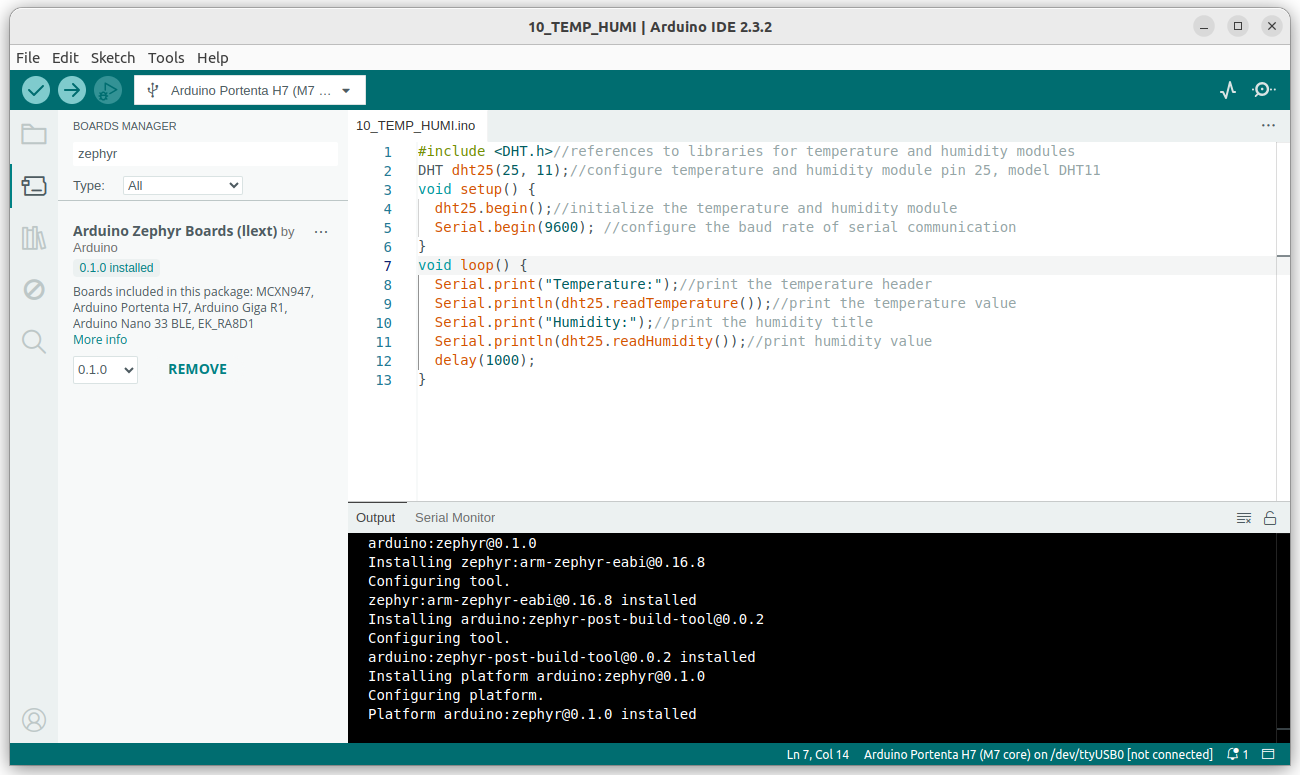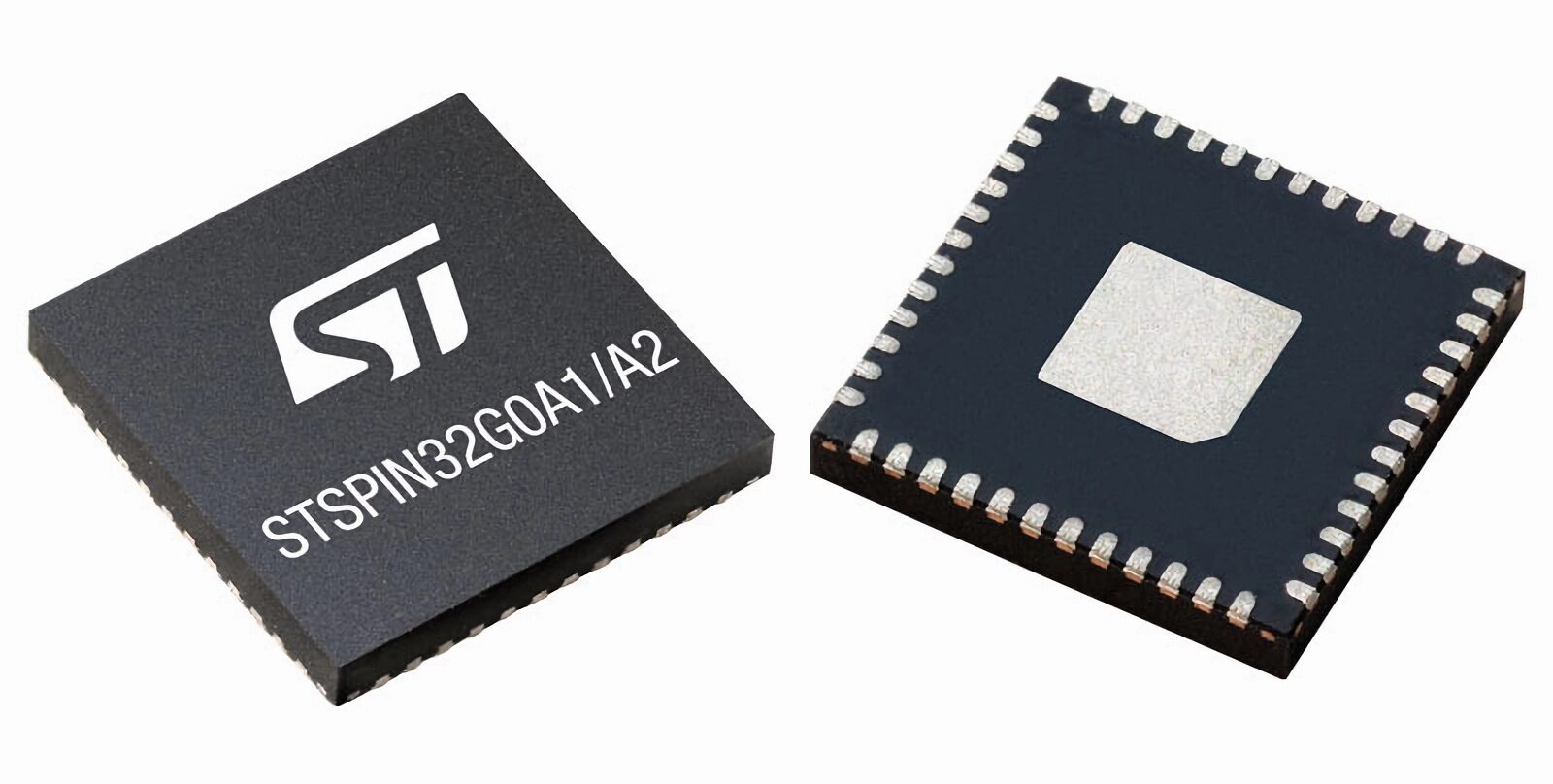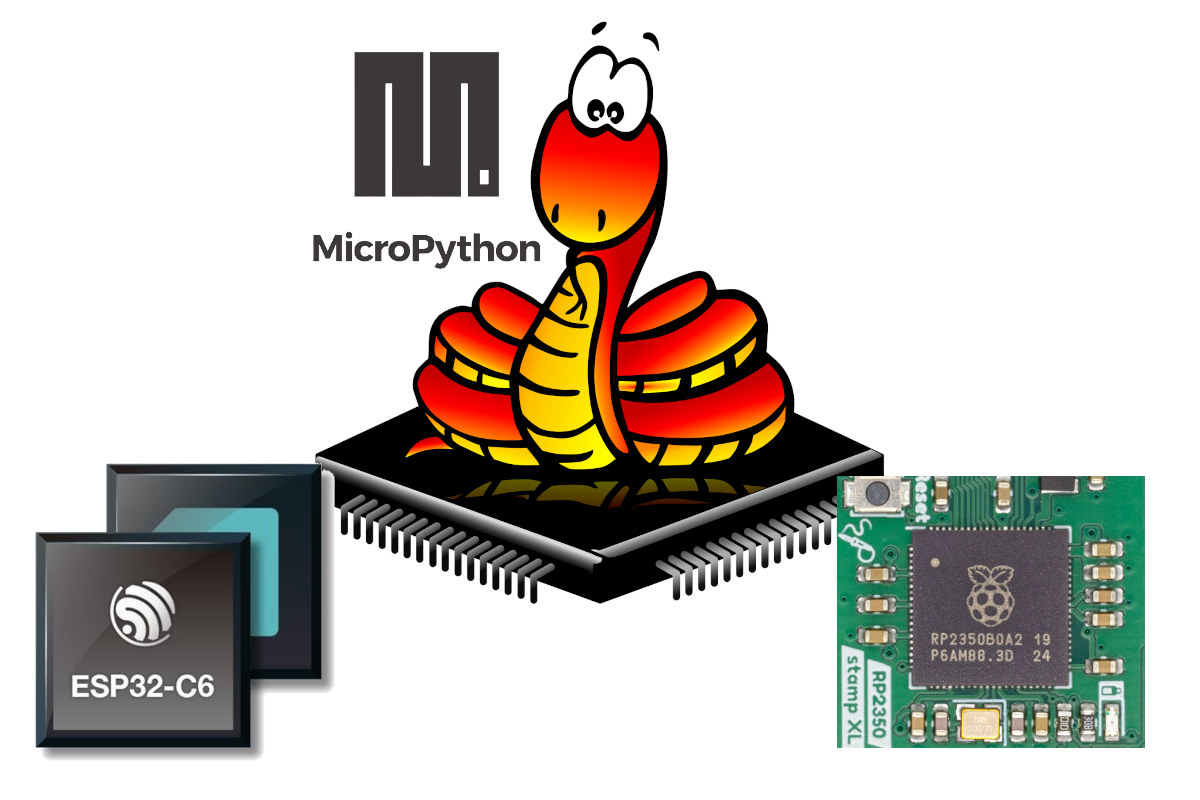Last July, Arduino announced plans to switch from the soon-to-be deprecated Arm Mbed to Zephyr RTOS, and the company has now outed the first beta release of “Arduino Core for Zephyr OS” for a range of boards. From the user’s perspective, this should not change anything. However, there are massive changes under the hood and Arduino sketches are built and executed differently with the Arduino Core for Zephyr. Some highlights of the new Zephyr-based Arduino core implementation include: Dynamic sketch loading – Sketches are compiled as ELF files and dynamically loaded by a precompiled Zephyr-based firmware. Zephyr subsystems support threading, inter-process communication, and real-time scheduling. Fast compiling and smaller binaries since a thin layer of user code and libraries are compiled, while the rest of the ZephyrOS is already binary. You can get started straightaway with the code and instructions on GitHub. You’ll need Arduino 2.x.x for this to work. […]
STMicro releases IO-Link actuator board for industrial monitoring and home appliances
STMicro has announced the EVLIOL4LSV1 IO-Link actuator board, an STM32G071CB Cortex-M0+ MCU-based reference design for commercial manufacturers with a built-in protocol stack and application software. Aimed at industrial beacons and home-appliance alarms, the EVLIOL4LSV1 combines the L6364Q dual-channel IO-Link transceiver (communications) and IPS4260L intelligent low-side power switch (for driving industrial loads). The EVLIOL4LSV1 IO-Link actuator board is powered by an STM32G071CB Arm-Cortex-M0+ microcontroller that hosts the proprietary stack and application software and communicates with the transceiver and low-side power switch. The evaluation board can be used to test the IPS4260 and L6364Q ICs. It features a 4-pin M12 connector for an IO-LINK master and a 5-pin SWD connector for programming. It can also directly interface with signaling systems, ranging from smart tower lights in factory automation to funnel alarms for quantity monitoring. The onboard transceiver is protected against electromagnetic interference and supports COM2 and COM3 speeds. It offers multiple modes […]
STMicro STSPIN32G0 3-phase motor controllers support up to 24V for portable appliances, up to 600V for industrial automation
STMicro STSPIN32G0 is a new series of advanced 3-phase motor controllers with variable voltage ranging from 45V to 600V that extend STMicro’s portfolio of devices with an integrated MCU and motor driver. The new series combines a triple-half bridge gate driver with the Arm Cortex-M0+-based STM32G0 microcontroller and is capable of handling six-step and field-oriented control (FOC) algorithms. The integrated design of the STSPIN32G0 series offers cost-savings and “significant BOM area reduction without compromising performance and robustness.” There are two main versions of the STSPIN32G0 series, low-voltage and high-voltage. The low-voltage 3-phase motor controllers include a voltage regulator, one or three shunts, and a gate driver rated at 45V and up to 0.6A. They are mainly targeted at home appliances, power tools, and drones. The high-voltage versions can handle either 250V or 600V, making them suitable for industrial inverters and fans. They are targeted at home appliances, air conditioners, home […]
M5Stack releases AX630C-powered offline “Module LLM” for local smart home and AI applications
The M5Stack Module LLM is yet another box-shaped device from the company that provides artificially intelligent control without internet access. It is described as an “integrated offline Large Language Model (LLM) inference module” which can be used to implement local LLM-based solutions in smart homes, voice assistants, and industrial control. Module LLM is powered by the AX630C SoC, equipped with 4GB LPDDR4 memory, 32GB storage, and a 3.2 TOPS (INT8) or 12.8 TOPS (INT4) NPU. M5Stack says the main chip has an average runtime power consumption of 1.5W, making it suitable for long-term operation. It has a built-in microphone, speaker, microSD card slot, and USB OTG. The USB port can connect peripherals such as cameras and debuggers, and the microSD card slot supports cold and hot firmware updates. The M5Stack Module LLM joins the list of other offline, on-device LLM-based solutions, such as the SenseCAP Watcher, Useful Sensors’ AI in […]
MicroPython v1.24 release adds support for RP2350 and ESP32-C6 microcontrollers, various RISC-V improvements
MicroPython has become one of the most popular ways of programming microcontrollers, and the just-released MicroPython v1.24 adds support for the widely-used Raspberry Pi RP2350 and Espresif ESP32-C6 microcontrollers and a range of other changes. Those include improved RISC-V support with native code generation, an updated Zephyr v3.7.0 RTOS with threading support, unified TinyUSB bindings across ports, a portable UART IRQ API, and enhanced mpremote recursive copy. Damien George goes into more detail about the RISC-V improvements: … include an RV32IMC native code emitter, native NLR and GC register scanning implementations for 32- and 64-bit RISC-V, support for placing RV32IMC native code in .mpy files and also freezing it, and RISC-V semihosting support. Testing for RISC-V is done with the qemu and unix ports, and the support is utilised in the esp32 and rp2 ports. The Raspberry Pi RP2350 comes with both Arm Cortex-M33 and RISC-V cores, and the good […]
MentorPi is a ROS2-compatible, Raspberry Pi 5-based robot car with Mecanum or Ackermann chassis
MentorPi is a ROS2-compatible robot car powered by the Raspberry Pi 5, designed for AI-driven robotics and Python programming. It offers two chassis options: MentorPi-M1, which features a Mecanum-wheel chassis, and MentorPi-A1, equipped with an Ackermann chassis. Both variants come with high-performance components such as closed-loop encoder motors, STL-19P TOF lidar, 3D depth cameras, and high-torque servos. These enable precise navigation, SLAM mapping, path planning, and dynamic obstacle avoidance, making MentorPi an ideal platform for robotics tasks. The system utilizes a dual-controller architecture to optimize performance. The Raspberry Pi 5 handles AI vision processing and strategic functions, while Hiwonder’s RRC Lite expansion board manages motion control and sensor data processing. This task distribution enhances efficiency in machine vision, AI-powered navigation, and robotic control, allowing MentorPi to tackle complex AI and vision-based applications with ease. MentorPi also supports advanced features like 3D visual mapping and YOLOv5-based object detection for recognizing road […]
PCBWay’s 7th project design contest – Win prizes for your electronic, mechanical, or STM32 project (Sponsored)
PCBWay has launched its 7th project design contest in collaboration with Mouser with three categories, namely electronic project, mechanical project, and STM32 project. PCBWay’s design contests aim to encourage participants to engage in open-source innovation projects and inspire more people to join the electronics community. This year’s contest is no different and even adds the new STM32 project category to attract even more entrants. There are three phases in PCBWay’s 7th design contest: Project Release – September 2, 2024 – January 19, 2025 Project Review – January 20, 2024 – February 28, 2025 Result Announcement – March 10, 2025 The contest started last month, but you still have plenty of time to enter before January 19, 2025. As noted in the introduction three categories are available. Here are a few more details about these: Electronic project – Everything about electronic design, from simple circuits to advanced MCU and IoT projects, […]
Flipper Zero hacking tool gets MicroPython support
Developer and engineer Oliver Fabel has developed a port that is designed to run MicroPython on the Flipper Zero. This port allows users to write programs for Flipper Zero in Python, instead of built-in JavaScript. Till now you can access GPIO, ADC, PWM, the speaker, buttons, the display, and infrared communication with this but it doesn’t have support for NFC or RFID yet, and it’s still under development. Previously we have written about various addon boards for the Flipper Zero like the Mayhem v2, the ESP8266 Deauther board, the CAN bus addon board, and other powerful alternatives of the Flipper like The M1 and the HackBat. Feel free to check those out if you are interested in the topic. The process is simple, and you don’t have to do a firmware update to work with MicroPython, you can download the application from the community-driven Flipper app store and are good […]










